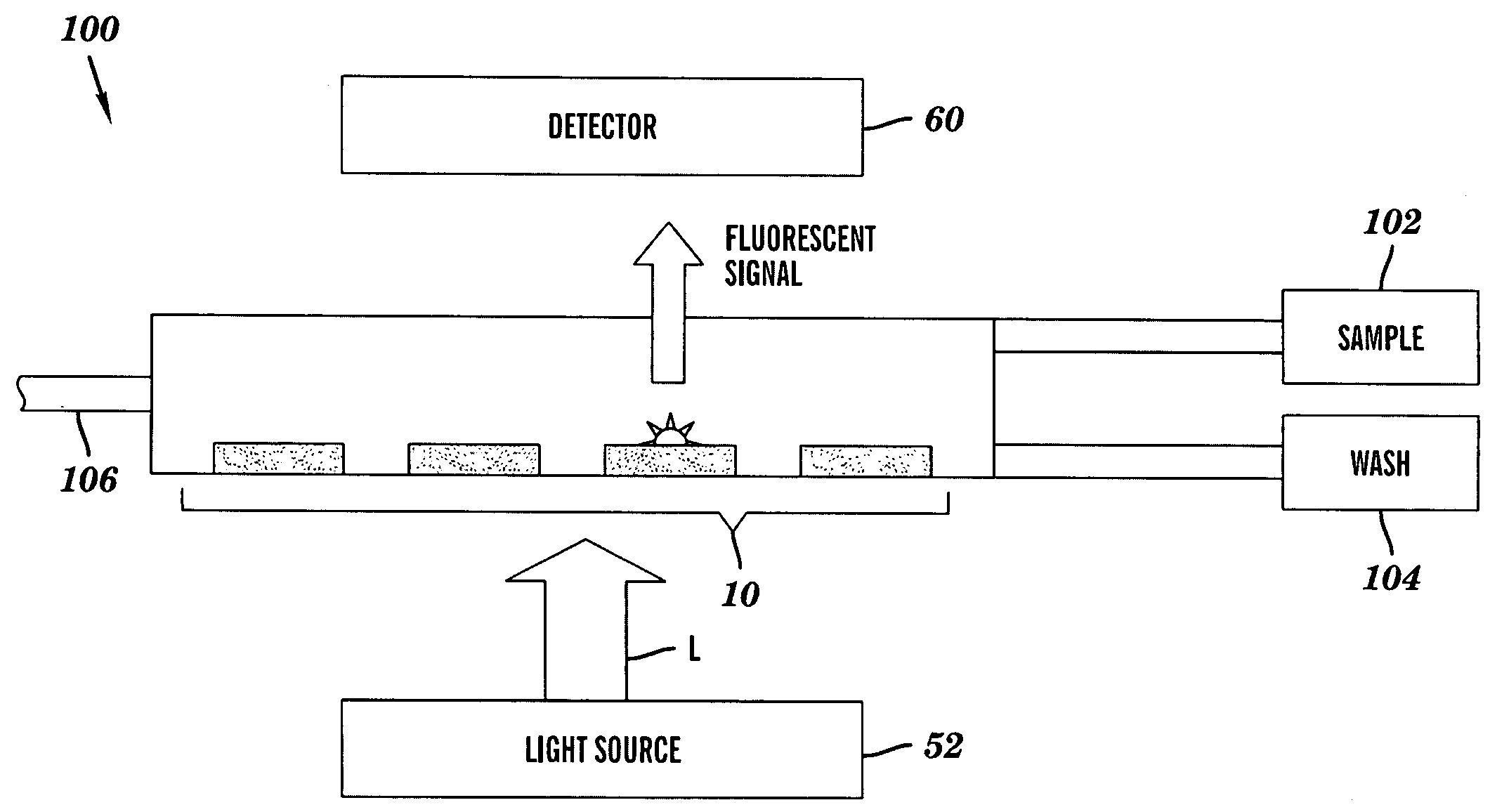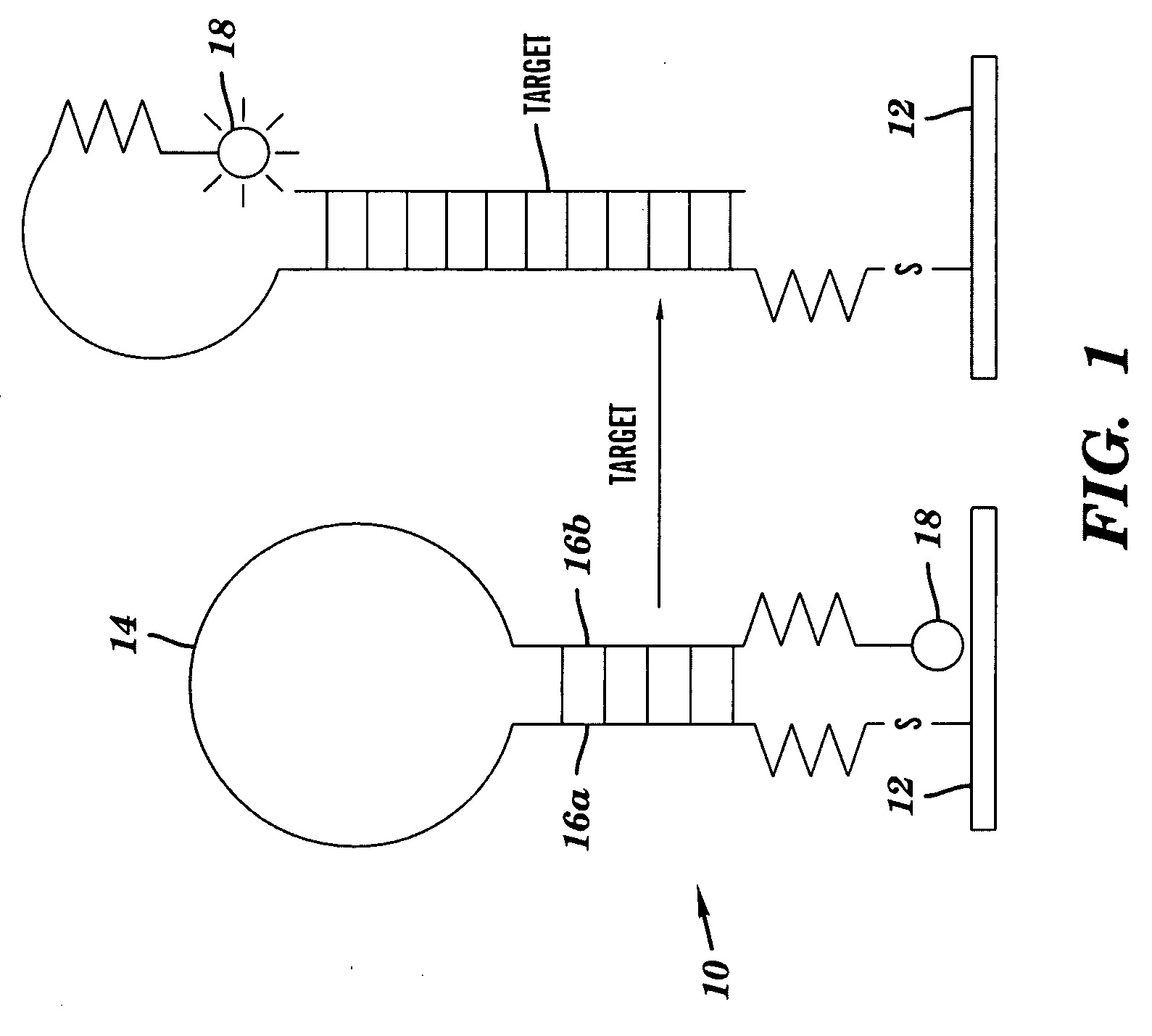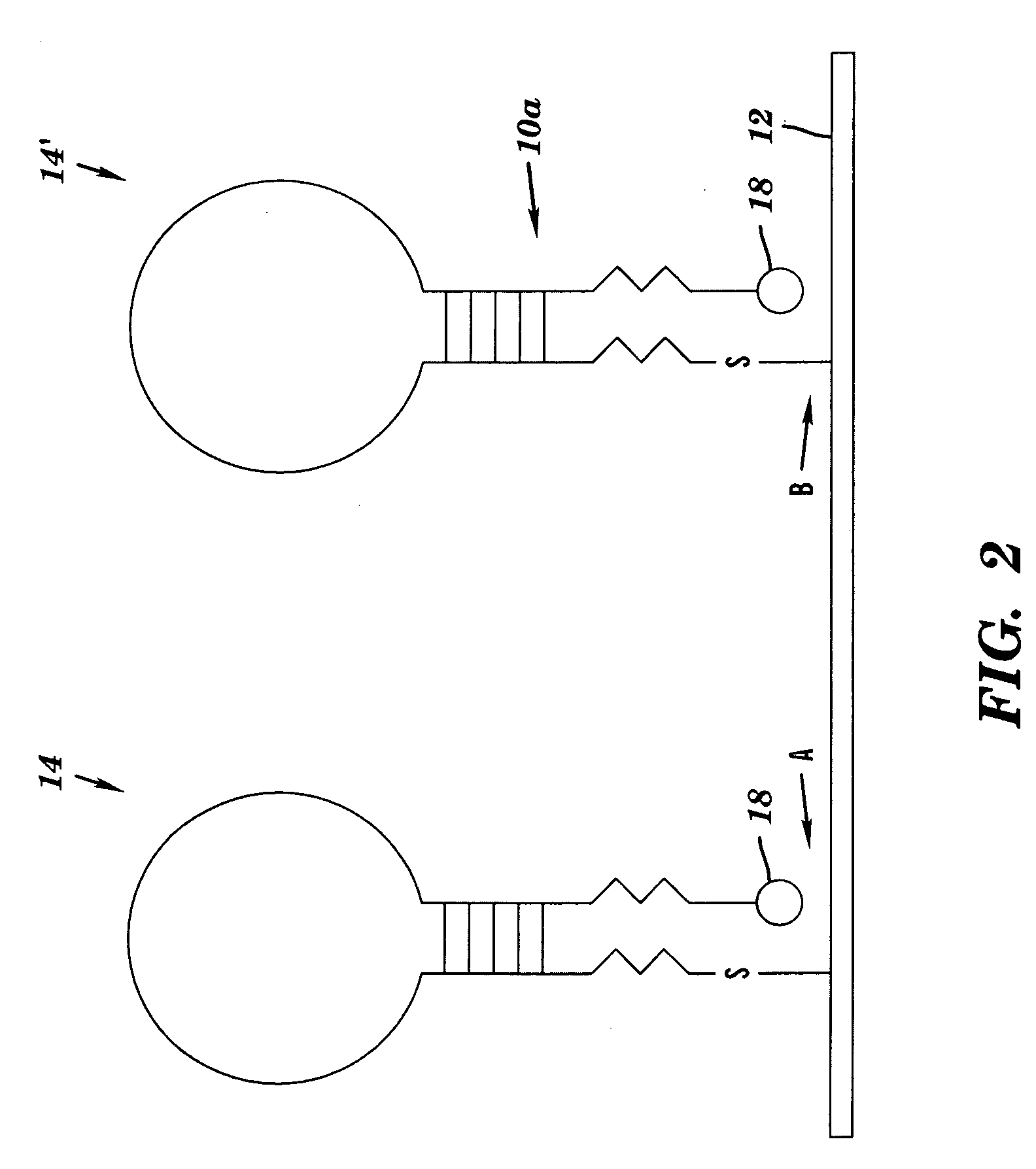DNA microarray having hairpin probes tethered to nanostructured metal surface
a nanostructured metal surface and hairpin technology, applied in the direction of fluorescence/phosphorescence, instruments, nucleotide libraries, etc., can solve the problems of hairpin unfolding, signal generation, time-consuming and laborious, and achieve optimal performance, fluorescence enhancement, avoid or minimize the need for spacer molecules
- Summary
- Abstract
- Description
- Claims
- Application Information
AI Technical Summary
Benefits of technology
Problems solved by technology
Method used
Image
Examples
example 1
Fabrication and Characterization of Nanostructured Ag Substrates
[0095]Fabrication of nanostructured Ag substrates was accomplished by covalently attaching Ag nanoparticles onto 3-mercaptopropyl-trimethoxysilane (MPTS, Gelest, Inc) treated glass chips via Ag+ ion reduction in N—N dimethylformamide (DMF, Mallinckrodt) (Pastoriza-Santos et al., Langmuir 15:948-951 (1999); Pastoriza-Santos et al., J. Colloid Interface Sci. 221:236-241 (2000); Sabanayagam et al., Nucleic Acids Res. 35(2):e13 (2007), each of which is hereby incorporated by reference in its entirety. First, a standard glass microscope slide was cleaned by soaking with piranha solution (H2SO4: 35%: H2O2; 3:1) for 15 minutes. The glass slide was then rinsed with distilled, deionized (DDI) water, soaked in a 10 M NaOH solution for 5 minutes, rinsed again with DDI water, and finally dried under nitrogen gas. The cleaned glass slides were silanized by incubating in a solution composed of 1% MPTS, 95% methanol, and 4% 1 mM aceti...
example 2
DNA Detection System Utilizing Nanostructured Ag Substrates as the Sensing Substrates
[0099]To examine the correlation between the relative intensity change and the substrate surface characterization, the detection performance on nanostructured Ag substrates fabricated under different Ag exposure times in a 10 mM AgNO3 solution was examined.
[0100]This experiment employed the previously described probe designated BaPag 1208, which has the nucleotide sequence 5′-TCGTTAGTGTTAGGAAAAAATCAAACACTCGCGA-3′ (SEQ ID NO: 1). The probe was purchased from Integrated DNA Technologies, Inc (IDT); this probe bears a 3′-tetramethyl rhodamine (TMR) fluorophore (Abmax: 559 nm, Emmax: 583 nm) and a 5′-thiol (disulfide form)). This probe has a secondary structure as described in U.S. Patent Publ. No. 20070166731, which is hereby incorporated by reference in its entirety. Use of this probe permitted the comparison of Ag NP substrate results with prior experiments where planar Au films were used as the sens...
example 3
Role of Surface Blocking Agent with Ag Nanoparticle Film
[0109]Earlier studies with planar Au substrate demonstrated the importance of adding a surface blocking agent, mercaptopropanol, as a competitive spacer molecule between probe DNA to mitigate the steric effect (Du et al., J. Am. Chem. Soc. 127:7932-40 (2005), which is hereby incorporated by reference in its entirety). To find out if the finding still holds in the new nanoparticles films, the effect of MP concentration on detection performance was examined. In this experiment, the ratio of [MP] / [DNA] was varied from 0 to 25 ([DNA] represents probe DNA concentration, which was held constant at 300 nM). Lowering the ratio of [MP] to [DNA] from 1 with the use of Au planar substrates resulted in poor performance; specifically, high background signals were measured (Du et al., J. Am. Chem. Soc. 127:7932-40 (2005), which is hereby incorporated by reference in its entirety). Surprisingly, the opposite results were observed with the use...
PUM
| Property | Measurement | Unit |
|---|---|---|
| Thickness | aaaaa | aaaaa |
| Surface roughness | aaaaa | aaaaa |
| Surface roughness | aaaaa | aaaaa |
Abstract
Description
Claims
Application Information
 Login to View More
Login to View More - R&D
- Intellectual Property
- Life Sciences
- Materials
- Tech Scout
- Unparalleled Data Quality
- Higher Quality Content
- 60% Fewer Hallucinations
Browse by: Latest US Patents, China's latest patents, Technical Efficacy Thesaurus, Application Domain, Technology Topic, Popular Technical Reports.
© 2025 PatSnap. All rights reserved.Legal|Privacy policy|Modern Slavery Act Transparency Statement|Sitemap|About US| Contact US: help@patsnap.com



